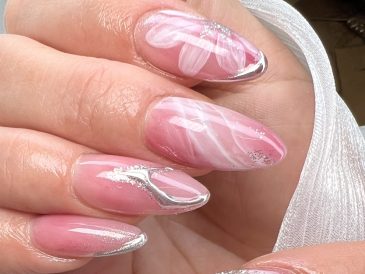Sandals are one of the oldest forms of footwear, with a history that spans thousands of years and traverses multiple cultures. Simple in construction yet diverse in design, sandals have evolved from basic protective coverings to fashionable and functional accessories. This article explores the origins, variations, cultural significance, and modern interpretations of sandals, underscoring their enduring appeal and versatility.
Table of Contents
Origins and Early History
The history of sandals dates back to ancient civilizations. The oldest known sandals, discovered in Fort Rock Cave in Oregon, are estimated to be around 10,000 years old. These early examples were crafted from sagebrush bark, highlighting the ingenuity of early humans in using available materials to protect their feet.
In ancient Egypt, sandals were a symbol of status and were made from papyrus and palm leaves. The Egyptians’ affinity for sandals is evident in their art, with numerous depictions of pharaohs and deities wearing them. Similarly, the Greeks and Romans popularized sandals, making them a staple in their respective societies. Greek sandals, often made of leather, were practical for the warm Mediterranean climate, while Roman sandals, such as the caligae worn by soldiers, were designed for durability and long marches.
Cultural Significance and Variations
Sandals have not only been practical but also hold cultural significance across the globe. In Japan, for example, the zori and geta are traditional sandals that have been worn for centuries. The zori, often made of rice straw or leather, influenced the modern flip-flop, while the geta, with its wooden base, is still worn during traditional ceremonies and festivals.
In India, sandals are deeply embedded in the cultural fabric. The paduka, a wooden sandal, is one of the oldest forms of footwear in India and is often associated with religious significance. Similarly, in the Middle East, the humble sandal has been a staple for centuries, adapting to the region’s hot climate and nomadic lifestyle. The traditional leather sandals of the Bedouins, known as naal, are a testament to the blend of functionality and craftsmanship.

Modern Innovations and Fashion Trends
As societies progressed, so did the design and materials of sandals. The 20th century saw a significant transformation with the introduction of synthetic materials, making sandals more affordable and diverse in design. Brands like Birkenstock, founded in 1774, gained popularity for their ergonomic designs, emphasizing comfort and foot health.
The late 20th and early 21st centuries witnessed a surge in the popularity of sandals as fashion statements. Designers began to experiment with bold styles, luxurious materials, and intricate embellishments. High-end fashion houses like Gucci, Prada, and Louis Vuitton have incorporated sandals into their collections, elevating them to luxury status.
The versatility of sandals is also reflected in the variety of styles available today. From the minimalist flip-flop to the rugged hiking sandal, there is a design to suit every need and preference. Gladiator sandals, inspired by ancient Rome, have seen a resurgence in fashion, characterized by their multiple straps and knee-high length. Meanwhile, sporty sandals, such as those by Teva and Chaco, cater to the active lifestyle, offering durability and support for outdoor activities.

The Environmental Impact and Sustainable Practices
With the increasing awareness of environmental issues, the footwear industry, including sandal manufacturers, is moving towards more sustainable practices. Traditional sandal-making techniques, which often use natural materials and handcrafting methods, are being revisited and appreciated in modern contexts. Companies are exploring eco-friendly materials such as recycled plastics, organic cotton, and plant-based alternatives to leather.
Brands like TOMS and Allbirds are leading the way in sustainable footwear. TOMS, known for its “one for one” model, provides a pair of shoes to a child in need for every pair sold, emphasizing social responsibility. Allbirds focuses on using renewable materials like merino wool and eucalyptus tree fibers, reducing the carbon footprint associated with shoe production.
The Future of Sandals
The future of sandals lies in the balance between innovation and tradition. Advances in technology are enabling the creation of sandals that offer enhanced comfort, support, and durability. For instance, 3D printing is being used to create custom-fit sandals, ensuring a perfect fit for each individual.
Moreover, the rise of smart textiles and wearable technology suggests that future sandals could incorporate features like temperature regulation, moisture control, and even health monitoring. These advancements could revolutionize the way we think about footwear, making sandals not just a fashion statement or practical necessity, but a key component of personal well-being.
In tandem with technological advancements, there is a growing appreciation for traditional craftsmanship. Artisanal sandals, handmade using age-old techniques, are gaining popularity among consumers who value uniqueness and sustainability. This trend reflects a broader shift towards slow fashion, where quality and ethical production take precedence over mass production and disposable fashion.

Conclusion
Sandals, with their rich history and cultural significance, continue to be a beloved form of footwear worldwide. From the rudimentary designs of ancient civilizations to the high-fashion statements of today, sandals have evolved in response to changing needs, climates, and aesthetic preferences. As we move forward, the challenge and opportunity lie in blending innovation with tradition, ensuring that sandals remain both functional and fashionable while minimizing their environmental impact. Whether worn for comfort, style, or cultural expression, sandals are a testament to human creativity and adaptability, embodying a legacy that stretches back millennia and promises to stride confidently into the future.




